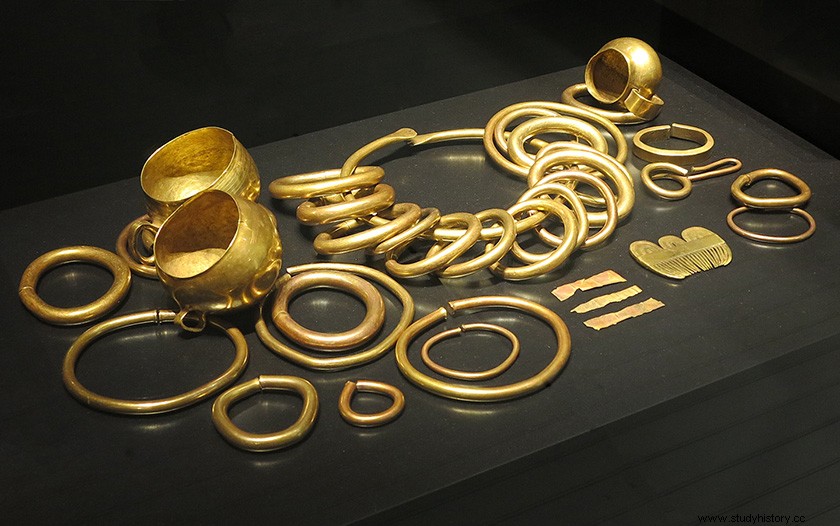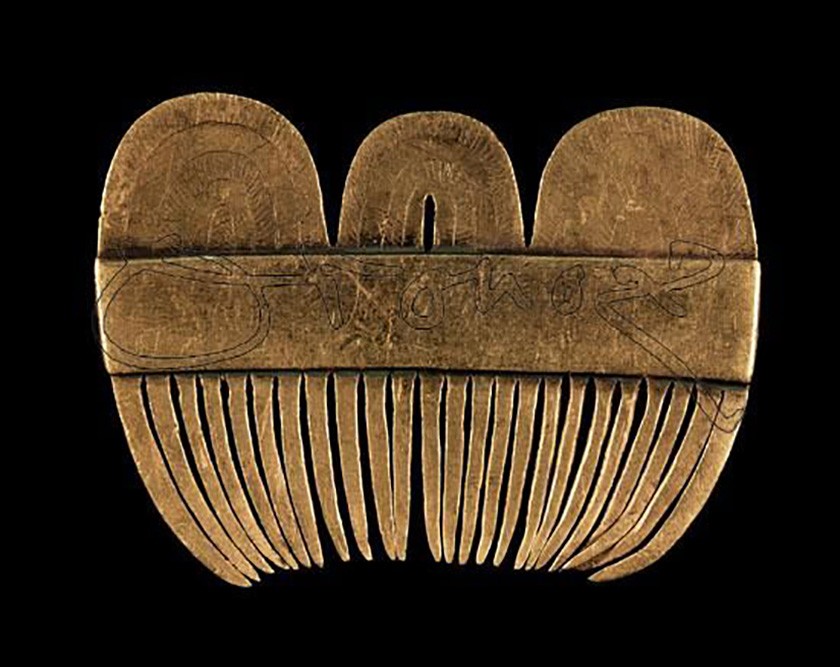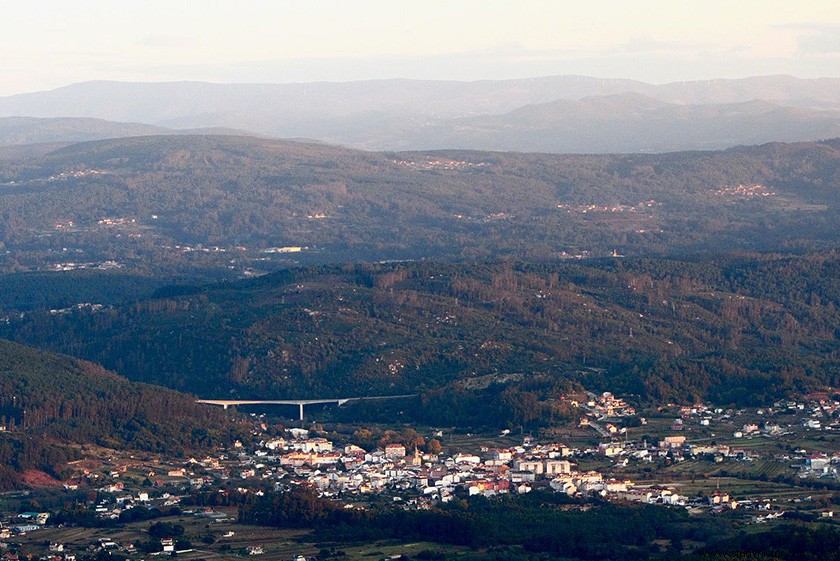
On this day, 78 years ago, the largest prehistoric treasure of the Iberian Peninsula was found in the province of Pontevedra, curiously it is less known than one of its brothers found in the province of Alicante a few years later. In short, we repeatedly find the news that the treasure of Villena is the largest accumulation of gold in the prehistory of the Iberian Peninsula. I honestly can't find the reason why the Treasure of Ace Silgadas does not usually appear ahead, since as we will see below, at least in relation to its total weight, the second greatly exceeds the first. Known as the Treasure of Caldas I, to find it, we have to go to the Pontevedra Museum, where the find in question was deposited, coming from As Silgadas, a small urban nucleus in the municipality of Caldas de Reis.
To learn about his discovery we must go back to the months after the Spanish civil war, specifically to the year 1940, when a farmer who was carrying out plowing work for the planting of new vineyards came across with a large gold ring. There are no great data on the author of the meeting, but it is not difficult to imagine the economic situation of the meeting only one year after the end of the war, so his fate was the black market. Six months later, some pieces began to be rescued by the Civil Guard, the latter brought it to the attention of the anthropologist and writer Fermín Bouza Brey, the true discoverer of it.
The ring, according to the investigations of the Civil Guard, was only the tip of the iceberg of the greatest prehistoric treasure of the Iberian Peninsula. It was not completely rescued, since it is estimated that its total weight could be around 28 kg of pure gold. Even so, its 14.9 kg far exceeds the almost 10 kg of the well-known Treasure of Villena. Note that it is made up of:31 circular ingots of different sizes, the largest of which is 21 cm in diameter and weighs 870 g. To this we must add three glasses, one of them in the shape of a jug with a handle, plus a comb, and finally 6 elongated ingots.

One of the most unique pieces, the comb from the prehistoric treasure of Caldas I
More questions than answers.
The treasure of As Silgadas, as the headline says, has more questions than answers. The most obvious thing is its intentional deposit for its concealment, the reasons obviously a difficult mystery to solve. Neither more nor less than that, like the time of the event, the experts do not agree on its dating. The data revolves around the beginning of the Bronze Age, approximately 4,000 years ago. Although this aspect generates great controversies, due to two main issues; on the one hand, its elaboration technique called "lost wax" which is doubtful that it can be so old. And on the other, its composition, with a large number of ingots, suggests some payment system, which leads us to think of the most recent moments of the Metal Age.
The area where it was hidden has special characteristics that give it added value. The Umia river valley is one of the most fertile areas in the south of Galicia, thanks to its climatic bonanza, with very mild winters and not very hot summers, accompanied by a regime of winter rains that provide rich land for agriculture and livestock. All this turned this small valley into one of the most populated areas since prehistory and a place of passage; without going any further, in Roman times a road passed through this place, and since medieval times the place has seen the millions of pilgrims who come to Santiago de Compostela.

Caldas de Reis today
Their hiders are also a mystery, but they evidently could have had a clear social structure of warlordship. According to calculations of experimental archaeology; 28 kg of gold, were not easy to accumulate, since they could have involved the work of more than 15 people for a year panning the surrounding rivers, the only way known at that time to obtain it, since there is no evidence of primary extraction. On the other hand, experts highlight the high degree of purity of gold, which leads us back to obtaining it by panning rivers. All these aspects suggest a complex society with an evident distribution of tasks.
The doubts do not end here, since some of the objects found suggest foreign contacts, an aspect that is not surprising in an area with a strong influence of Atlantic currents. This influence, from the prehistoric cultures of the British Isles, is evident in nearby sites where weapons such as heel axes have been found, so such external contributions to the treasure cannot be ruled out. But what is more contradictory is the decoration of the vessels and jars, it is very complicated that this was done without some rotation system similar to a lathe, so it can obviously delay the dating of the concealment until the arrival of the Phoenicians a millennium later.
Conclusion.
I cannot conclude without introducing a question:What is the reason for the little knowledge of this treasure compared to other similar ones? Honestly I have not found the answer, the enormous doubts and contradictions generated by the different hypotheses, may be behind this aspect. But at least we can begin to change the discourse that the Treasure of Villena is the largest located in the Iberian Peninsula. At the expense of future studies revealing more aspects of the As Silgadas Treasure, we can at least affirm that in terms of size it is the most important of all those found in Spain.
More info:
The Disenchanted Treasure, As Silgadas (Caldas de Reis), Xoán M. Domato Castro and Beatriz Comendador Rey, 1998.
museo.depo.gal
